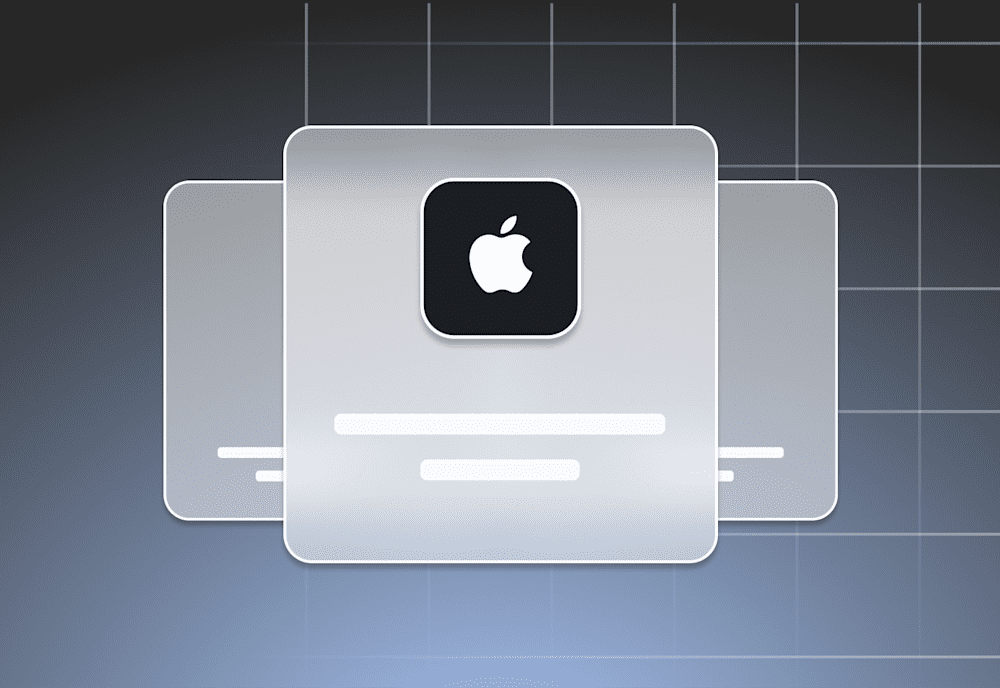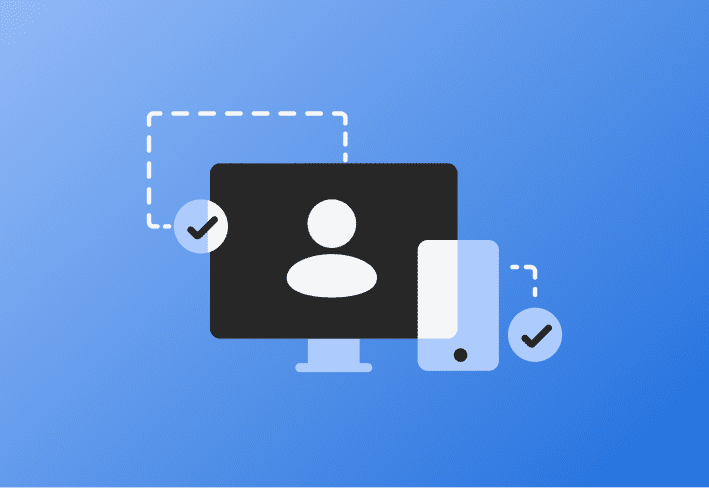For about as long as MDMs have existed, or at least as long as Apple’s Automated Device Enrollment (formerly Apple DEP) has existed, moving devices from one MDM service to another has been a hassle. Although many tools have been created over the years (with many variations using SwiftDialog in some form or another) to help ease this process, migrating from one MDM to another was still a hands-on process.
Former migration options
Previously, for iOS, devices had to be erased to kick off the re-enrollment process using Automated Device Enrollment (ADE), with the obvious downside of data loss from wiping the device. The only alternative path to avoid wiping iOS devices was to unenroll them from the current MDM, then re-enroll them using Device Enrollment (AKA manual enrollment, enrollment by link, etc.). One of the significant downsides to this approach is that the MDM profile would then be removable — an end user could manually unenroll the device from management.
For macOS, there was at least an option that allowed re-enrolling Macs without wiping them, but it was still cumbersome for many users. Regardless of what solution an admin was using, the gist was essentially the same:
Re-assign the device to the new MDM service in ABM.
Make sure the new MDM enrollment was set up as desired.
Unenroll the device from the current MDM.
Run
sudo profiles renew -type enrollmentOn macOS 15+ this command can be run without admin credentials and does not need sudo:
profiles -NOlder macOS versions could also be migrated by rerunning Setup Assistant, which could be kicked off by deleting the .appleSetupDone file from the device. This option was removed in macOS 13.
There were many tools built on the concept of automating the running of the above scripts, but ultimately, every tool had edge cases and required user interaction.
Updating to iOS and macOS 26
Need help getting your devices up to date with the latest OS version? Check out our guide for managing modern OS updates using SimpleMDM.
New MDM migration path with Apple Business Manager
At WWDC25, Apple announced a very exciting update: the ability to initiate an MDM migration for devices through Apple Business Manager. This drastically simplifies the migration process, eliminates the need for third-party tools, and, given the first-party nature, helps avoid many rough edges. Apple also added the ability to set a deadline for devices to be migrated. Somewhat in the same vein as Managed Software Updates, users are notified and reminded to migrate their device with increasing frequency leading up to the deadline, at which point they are forced to migrate their device. Let’s walk through how to set up this migration and what the user experience looks like on macOS 26 and iOS/iPadOS 26.
Prerequisites
Apple Business Manager account
Admin account in ABM with device enrollment manager permissions
Old MDM
New MDM account configured and ready for migration
Manage your Apple fleet with ease
Powerful yet effortless mobile device management is just a few clicks away.
How to configure Apple Business Manager for migration
First, sign in to business.apple.com as an administrator with device enrollment manager permissions. Make sure you have connected an MDM server in ABM to your new MDM account and have the new MDM account set up the way you want it.
Next, re-assign your device from the current MDM server to the new MDM server in Apple Business Manager. To re-assign a device, navigate to Devices, search and click the device, click Edit and choose Re-assign Device Management. Select the server connected to your new MDM.
When assigning the server, you will see a new option: Set deadline. If you do not set this deadline, the device will not be forced to migrate, but it will if it is erased or if the profiles command mentioned earlier is run. To force the migration to occur, choose Set deadline and pick your migration deadline date.
macOS user experience for MDM migration
As the deadline approaches, users will get notifications informing them that management of their device needs to be updated by a specific date. I’ve observed these notifications at 24 hours and then hourly leading up to the deadline. When the user clicks this notification, it opens a System Settings panel with the option to enroll in the new MDM.
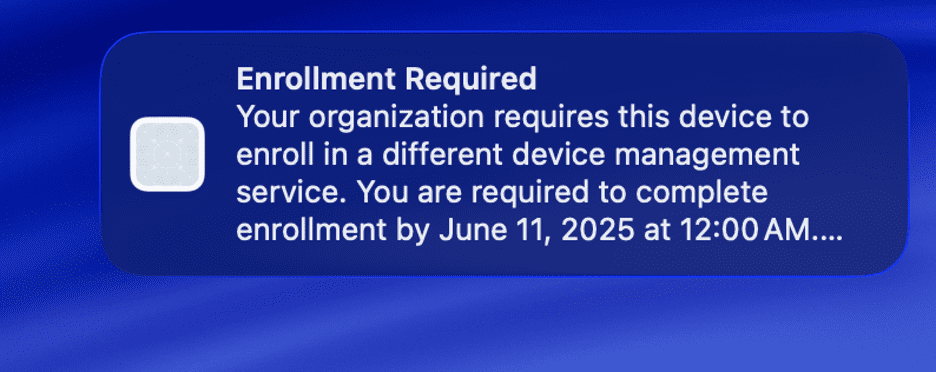
The notice will be displayed in System Settings as well:
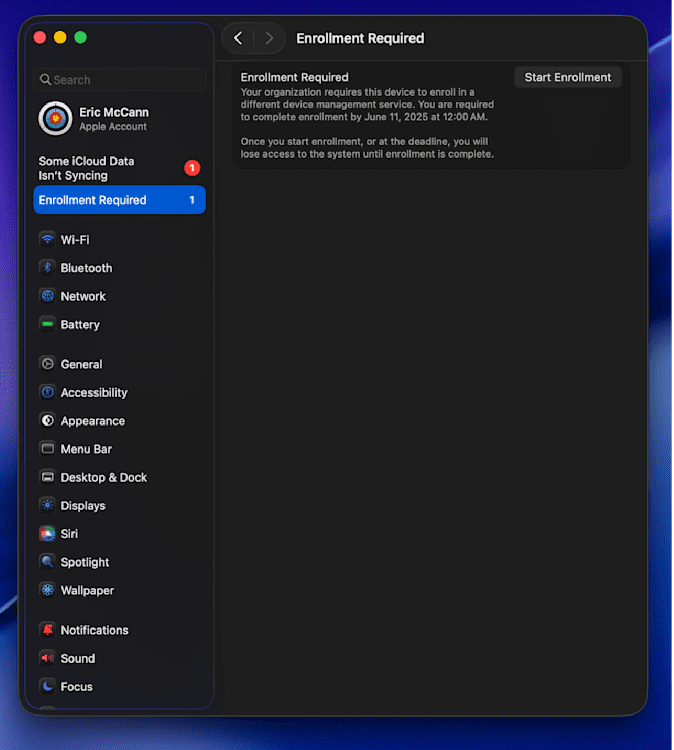
When the user clicks Start Enrollment, they will get a full screen pop-up where they can click Enroll. If the user clicks this before the deadline, they will have the option to cancel. If they have waited until the deadline, they will not see a Cancel button and will be forced to enroll to proceed.
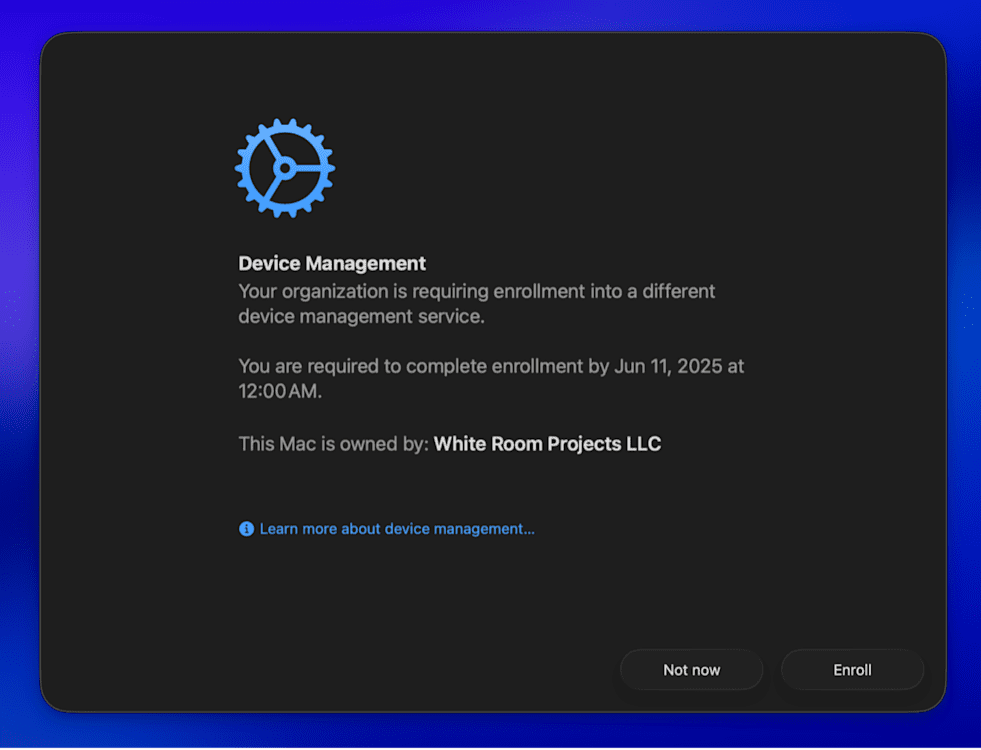
Once Enroll is clicked, the user gets some feedback that things are installing. After a few moments for everything to download, the device is released from AwaitConfiguration and it’s done. The user can now exit the full screen modal.
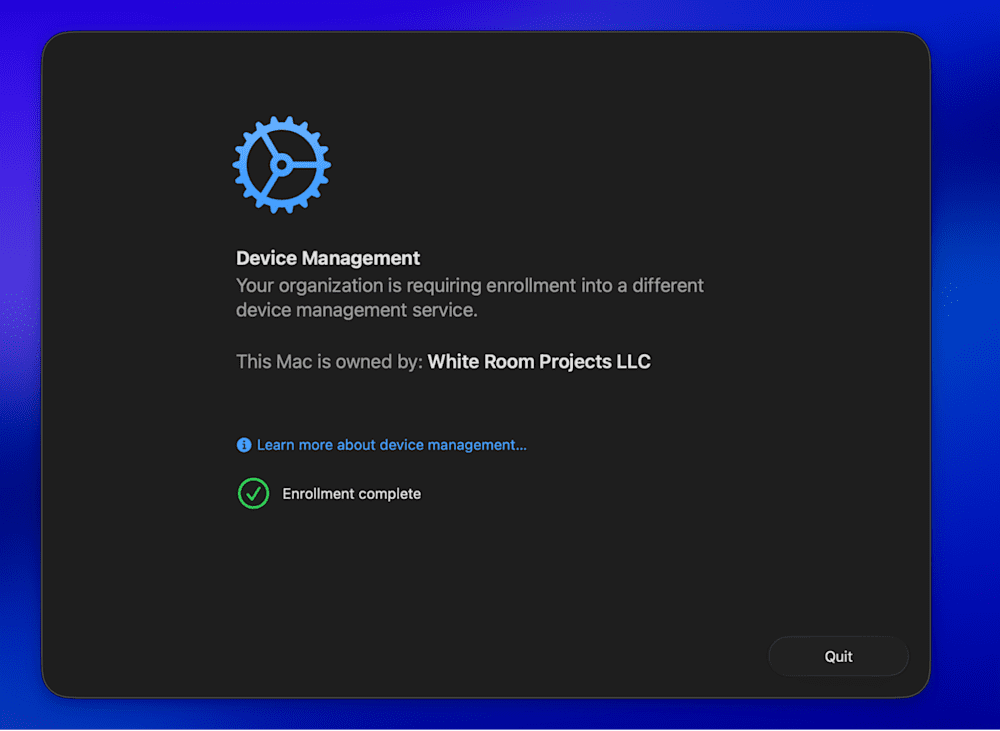
And that’s it! No running scripts in Terminal, no clicking download links, no deleting obscure files.
iOS user experience for MDM migration
The experience on iOS is relatively similar with one main exception: The device does need to perform a restart to finish the enrollment and complete the MDM migration.
When the deadline is reached, the user will receive a notification:
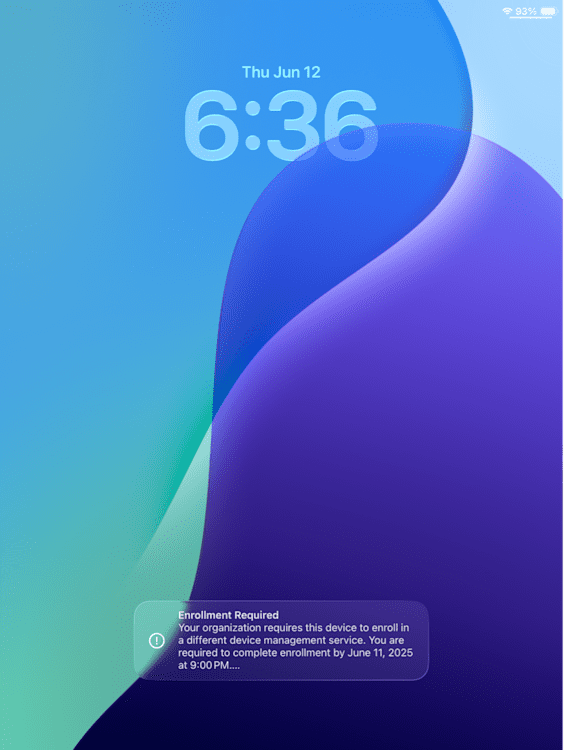
Following this prompt will bring the user to the Settings app:
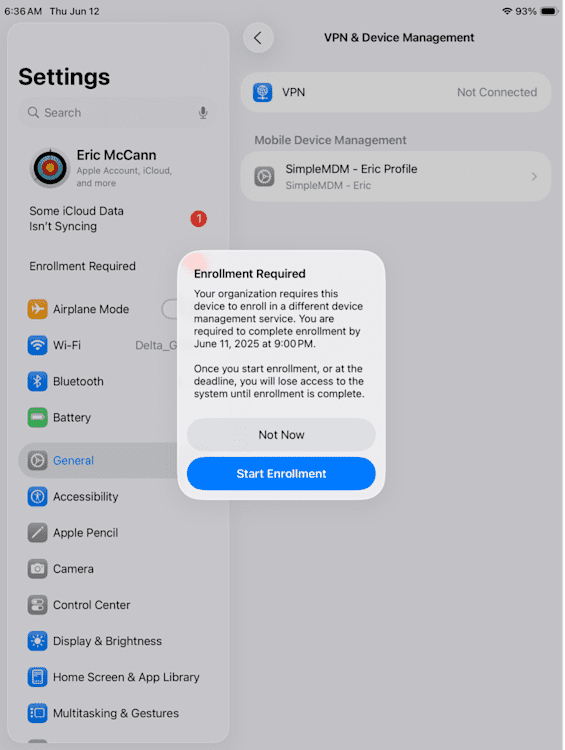
Selecting Start Enrollment will trigger a subsequent prompt notifying the user that a restart is required:
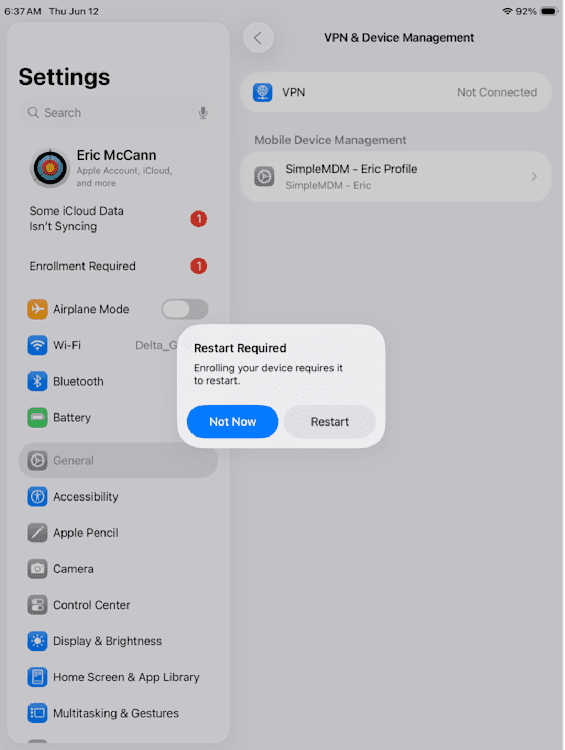
After selecting Restart, the device will promptly reboot and complete the enrollment in the new MDM service. The migration is now finished.
If the user elects to exit this flow at any point by selecting Not Now, they will be able to re-initiate it through Settings by tapping the Enrollment Required notice.
Offline devices and past deadlines
If devices are offline when the migration deadline lands, users will receive the prompt to migrate the next time that the device comes back online.
Conclusion
This update, available for macOS and iOS 26+, drastically simplifies the MDM migration process. If you are an IT admin who previously felt stuck with your current MDM solution due to the difficulty of migrating, this process should save you a lot of time and headaches. If you are in the market for a new MDM, put this new migration process to the test with a free 30-day trial of SimpleMDM.
